
Lindsay Ann Davenport Leach is an American former professional tennis player. Davenport was ranked singles world No. 1 for a total of 98 weeks, and was the year-end singles world No. 1 four times. She also held the doubles world No. 1 ranking for 32 weeks.

Serena Jameka Williams is an American former professional tennis player. Widely regarded as one of the greatest tennis players of all time, she was ranked world No. 1 in singles by the Women's Tennis Association (WTA) for 319 weeks, including a joint-record 186 consecutive weeks, and finished as the year-end No. 1 five times. She won 23 Grand Slam women's singles titles, the most in the Open Era, and the second-most of all time. She is the only player to accomplish a Career Golden Slam in both singles and doubles.

Venus Ebony Starr Williams is an American inactive professional tennis player. A former world No. 1 in both singles and doubles, Williams has won seven Grand Slam singles titles, five at Wimbledon and two at the US Open. She is widely regarded as one of the greatest tennis players of all time.
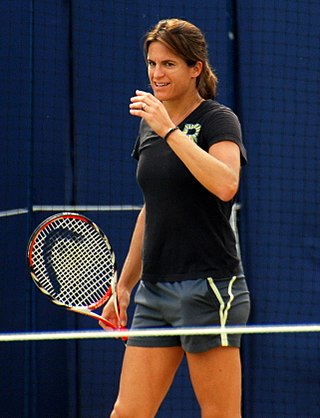
Amélie Simone Mauresmo is a French former world No. 1 tennis player, tennis coach, and tournament director. Mauresmo won two major singles titles at the 2006 Australian Open and Wimbledon Championships, as well as the silver medal in singles at the 2004 Athens Olympics and the singles title at the 2005 WTA Tour Championships.
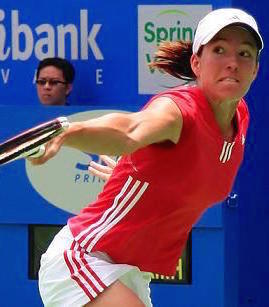
Justine Henin is a Belgian former world No. 1 tennis player. She spent a total of 117 weeks as the world No. 1 and was the year-end No. 1 in 2003, 2006 and 2007. Henin, coming from a country with limited success in tennis, helped establish Belgium as a leading force in women's tennis alongside Kim Clijsters, and led the country to its first Fed Cup crown in 2001. She was known for her all-court style of play and for being one of the few female players to use a single-handed backhand.

Monica Seles is a former world No. 1 tennis player who represented Yugoslavia and the United States. She won nine major singles titles, eight of them as a teenager while representing Yugoslavia, and the final one while representing the United States.
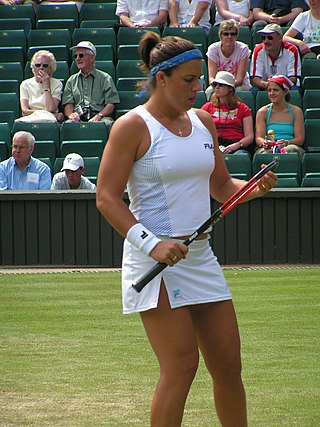
Jennifer Maria Capriati is an American former world No. 1 tennis player. A member of the International Tennis Hall of Fame, she won three singles Grand Slam titles and was the gold medalist at the 1992 Summer Olympics.
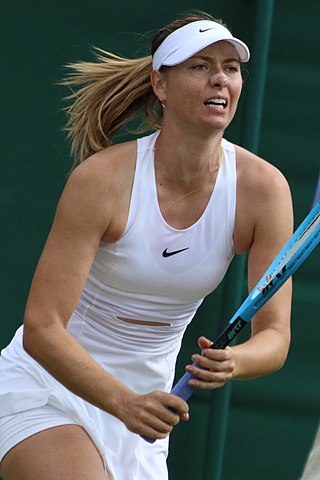
Maria Yuryevna Sharapova is a Russian former world No. 1 tennis player. She competed on the WTA Tour from 2001 to 2020 and was ranked world No. 1 in singles by the Women's Tennis Association (WTA) for 21 weeks. She is one of ten women to achieve the career Grand Slam. She is also an Olympic medalist, having won silver in women's singles at the 2012 London Olympics. She has been considered as one of the best tennis competitors of her generation.

Daniela Hantuchová is a Slovak tennis commentator and retired player. She turned professional in 1999 and had her breakthrough year in 2002, when she won her first WTA Tour title at the Indian Wells Open, defeating Martina Hingis in the final and becoming the lowest-ranked player to ever win the tournament. She also reached the quarterfinals of that year's Wimbledon Championships and US Open, ending the year in the top ten. She was part of the Slovak team that won the 2002 Fed Cup and the 2005 Hopman Cup.
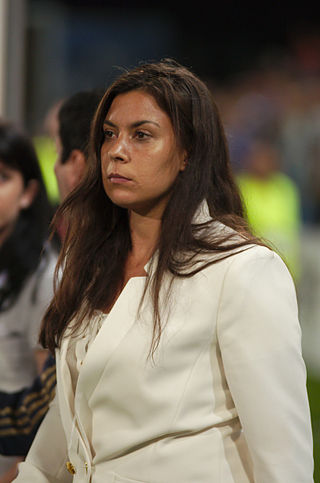
Marion Bartoli is a French former professional tennis player. Bartoli won the 2013 Wimbledon Championships singles title, after previously being runner-up in 2007, and was a semifinalist at the 2011 French Open. She also won seven WTA Tour singles and three doubles titles.
Venus Williams defeated Lindsay Davenport in the final, 6–4, 7–5 to win the women's singles tennis title at the 2000 US Open. It was her second major singles title, and she became the second woman to win Wimbledon, the Olympics, and the US Open in the same season.
Lindsay Davenport defeated Steffi Graf in the final, 6–4, 7–5 to win the ladies' singles tennis title at the 1999 Wimbledon Championships. It was her second major singles title, and Davenport did not drop a set during the tournament. This was the last major final in which Graf appeared; she was also attempting to complete the Channel Slam.
Serena Williams defeated her sister Venus Williams in the final, 7–6(7–4), 3–6, 6–4 to win the women's singles tennis title at the 2003 Australian Open. It was her fourth consecutive major singles triumph, completing the "Serena Slam", both a non-calendar year Grand Slam and the career Grand Slam. It was also Venus' record fourth consecutive runner-up finish at a major, losing every final to Serena. Serena saved two match points en route to the title, against Kim Clijsters in the semifinals.
Serena Williams defeated the two-time defending champion, her sister Venus Williams, in the final, 7–6(7–4), 6–3 to win the ladies' singles tennis title at the 2002 Wimbledon Championships. It was her first Wimbledon singles title, third major singles title overall, and the second component of her first "Serena Slam," a non-calendar year Grand Slam and career Grand Slam. She also claimed the world No. 1 singles ranking for the first time by winning the tournament. She achieved the 'Channel Slam', the first time this feat was achieved since Steffi Graf in 1996 and a feat she would accomplish again in 2015. Williams did not lose a set during the tournament.
Defending champion Serena Williams defeated her sister Venus Williams in a rematch of the previous year's final, 4–6, 6–4, 6–2 to win the ladies' singles tennis title at the 2003 Wimbledon Championships. It was her second Wimbledon singles title and her sixth major singles title overall.
Serena Williams defeated her sister Venus Williams in the final, 7–5, 6–3 to win the women's singles tennis title at the 2002 French Open. It was her first French Open title, second major singles title overall, and her first step towards completing her first "Serena Slam", a non-calendar year Grand Slam and career Grand Slam.
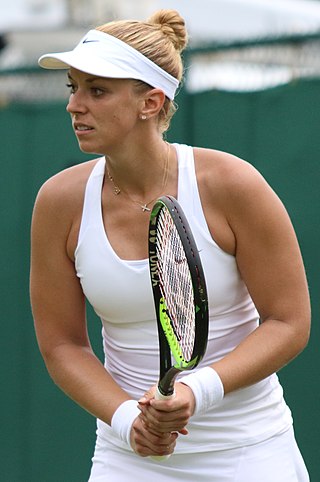
Sabine Katharina Lisicki is a German inactive professional tennis player.
Serena Williams defeated Jennifer Capriati in the final, 7–5, 7–6(7–4) to win the women's singles tennis title at the 2002 Miami Open. Serena became the second player in the Open Era, after Steffi Graf, to defeat the world's top-three ranked players at the same event; defeating world No. 3 Martina Hingis in the quarterfinals, No. 2 Venus Williams in the semifinals, and No. 1 Capriati in the final. Serena did not lose a set during the tournament.

Serena Williams's 2010 tennis season officially began at the 2010 Medibank International Sydney in Sydney. Williams started 2010 as the world no. 1.
Iva Majoli defeated Patty Schnyder in the final, 7–6(7–5), 6–4 to win the singles tennis title at the 2002 Family Circle Cup. It was her first title since the 1997 French Open, and the eighth and last title of her career.











